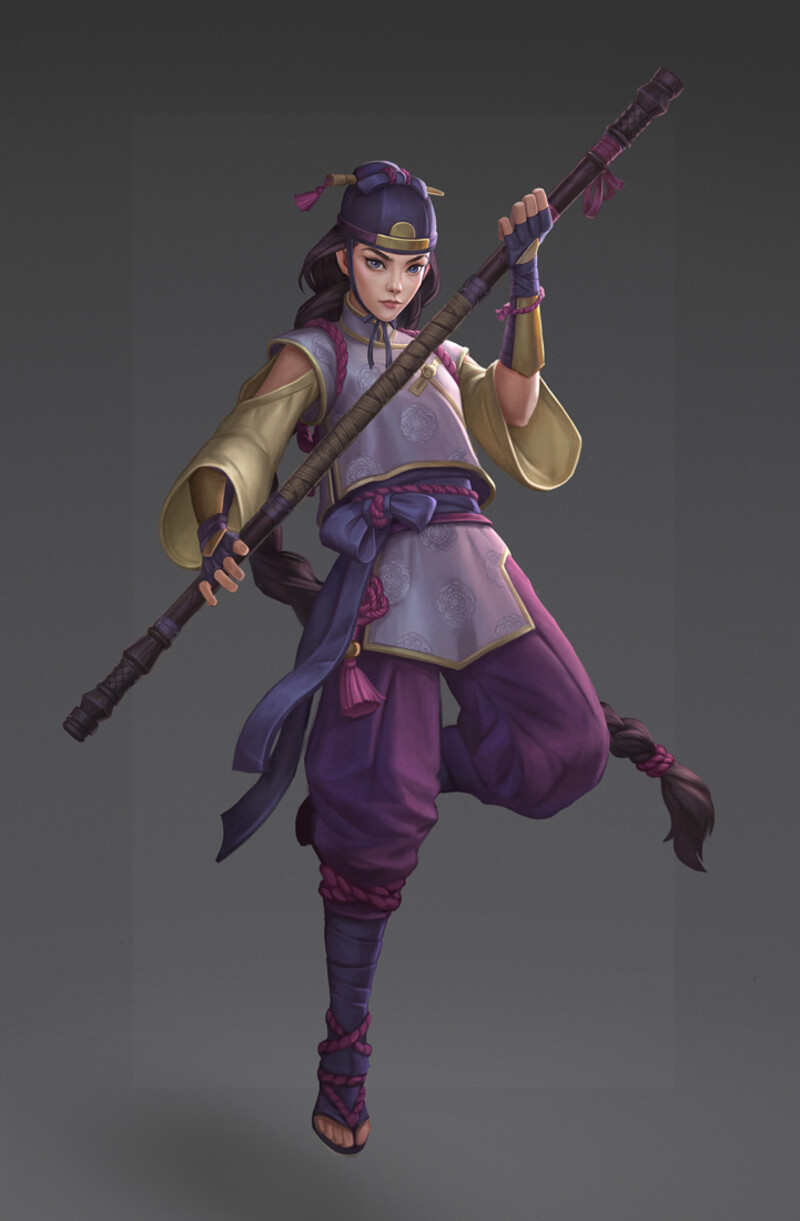Way of the Wuxia (5e Subclass)
Way of the Wuxia[edit]
Monastic Tradition
Monks are typically heroes of myths and legends, with stories that filled the imagination of generations with depictions of supernatural feats of skill and strength, with warriors that are capable of run trough the sky as if it wear firm ground, defeat multiple enemies by himself or even killing with a single blow. Those are Wuxia monks, martial heroes that control the ki and the power of weapons. These are typically wandering paladins, fighting to protect the weak and deliver justice whenever they may find themselves at. Is not uncommon to see Wuxia monks putting their powers at the service of defeating a brutal overlord, or helping a revolution against a tyrant. Others are avengers, looking far and wide to deliver vengeance against someone due to a deadly betrayal - such as the death of a friend, a lover or a master.
There are other reasons, however, that may lead one to seek this path. Some are ascetic masters, looking to perfect themselves and find transcendence, reaching a higher connection to the cosmic forces trough ki; others, just dedicated martial artists, in the pursuit of becoming living weapons by honing their martial skills, as a painter who hone his skills in the pursuit of his masterpiece. And finally, there are a few that seek martial power for vile reasons, wishing to use this power to oppress and conquer others for their own selfish desires. Those villains are ironically the inciting incident that creatures Wuxia heroes, creating an endless cycle of aggression and revenge.
- Waigong
Starting at 3rd level, you become a specialized in all weapons, becoming a true master of war. You gain proficiency with all simple and martial melee weapons, and with improvised weapons, and these are considered monk weapons for you, as long as they lack the heavy or two-handed property.
- Neigong
At 3rd level, you perfect the art of breathing, allowing you to absorb and channel ki with more efficiency. When you have no ki left, you can use your bonus action to gain a number of ki points equal to 2 + twice your proficiency bonus. You can have more ki points than your maximum after using this feature, but these ki points are lost after you finish a short rest, if not spent.
In addition, you can use this ki in a varied number of ways. Whenever you make an Strength, Dexterity or Constitution check or saving throw, regain hit points or make a Death Saving Throw, you can spend 1 ki point to roll a martial arts die and add the number rolled to the result. You can only do this once per roll.
Once you use this feature, you can't do it again until you finish a long rest.
- Qinggong
At 6th level, you master the art of the gentle step, allowing you to reduce the weight of your body, becoming able to defy gravity. Whenever you take a Step of the Wind, you gain a flying speed equal to your movement speed, that last until the end of this turn. You must end your turn in the ground, or else you fall.
In addition, you can stand on almost any surface weightless. You are considered to have 1/10 of your actual weight, for the purposes of objects and structures being able to support you.
Finally, whenever you make a check or saving throw to avoid being knocked prone or to maintain balance, you can replace a roll of 9 or lower for a 10 instead.
- Zhaoshi
Also at 11th level, you become adept on the use of fighting sequences to hone your fighting abilities, that can be used for diverse purposes.
- Single Opponent. You can spend 1 ki point as a bonus action to make three attacks at blinding speed against a creature. Make a single unarmed strike, and on a hit, roll the damage of three unarmed strikes.
- Multiple Opponents. You can spend 1 ki point as a bonus action to make one unarmed strike against each creature within 5 feet of you.
- Weapon Technique. When you use your flurry of blows, you can make attacks with a monk weapon, instead of using a unarmed strike. In addition, you can use your Deflect Projectiles to parry attacks made with weapons. When you do so, if you reduce the damage of an attack to 0 hit points, you can use 1 ki point to make an opportunity attack against an opponent within 5 feet.
Over the course of a short rest, you can practice your martial arts sequences, changing your current sequence for a new one. You can also spend 2 ki points to change the fighting sequence as an action.
- Dianxue
At 17th level, you devise techniques that can disrupt the flows of ki in the body of your target. When you use your stunning strike, you can choose to apply one of the following effects, in addition to the stunned condition:
- You can inflict the charmed, frightened, paralyzed, poisoned or inflict one level of exhaustion.
- You can cause the target to regain hit points it would take from the attack, and remove one of the aforementioned conditions. The target can willingly fail this save.
Back to Main Page → 5e Homebrew → Character Options → Subclasses

